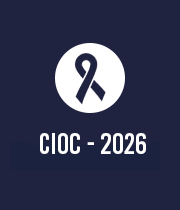Title : Pharmacovigilance in multiple Myeloma care in sub-Saharan Africa
Abstract:
The quality and disability adjusted life-years are the two predictive markers of average life expectancy of any patient. In Multiple myeloma (MM), the duos are the functions of the stage of presentation of primary disease and the impact of the therapeutic (anti-myeloma) intervention. The ‘’impact of therapeutic intervention’’ in this context connotes the safety and the adverse effects of anti-myeloma target drugs on the body. The ability to detect or predict the adverse effects of anti-myeloma target therapy and protect the patient or prevent the occurrence will contribute to improved life expectancy of target MM patient. Pharmacovigilance on anti-myeloma therapy is the science that deals with risk assessment and management of prospective anti-myeloma target drugs. This framework ensures safety and surveillance of anti-myeloma drugs administered to prospective MM patients. It is a very important arm of comprehensive care of people living with MM. This study highlights the safety measures undertaken by the healthcare professionals and MM patients who are on immunomodulatory anti-myeloma drugs in order to minimize adverse drug reactions in the underserved areas of sub-Saharan Africa.
This study was an integrated review of the works of literature on pharmacovigilance of a MM patients on anti-myeloma chemotherapeutic agents and the risk management programme for immunomodulatory anti-myeloma target drugs (thalidomide and lenalidomide) using Pub Med, Medline, CINAHL, Google Scholar, AJOL and pharmacovigilance practical manuals from African countries as databases. The paper was analysed and grouped according to the following categories namely an introduction to pharmacovigilance in the care of MM patients, some of the adverse drug reactions encountered with the use of anti-myeloma drugs, pharmacovigilance risk management programme and risk management protocols for immunomodulatory drugs.
This study showed that an effective pharmacovigilance programme requires specially trained healthcare professionals made up of physician (prescriber), pathologist, pharmacist (dispenser), oncology director (haemato-oncologist), nurse, social worker and palliative care specialist. The consent/registration adverse drug reaction forms are the essential safety working documents that are needed to be completed by the patient and healthcare professionals. Both healthcare provider and the patient are expected to adhere strictly to the safety measures enshrined in the healthcare professional and the patient’s pharmacovigilance brochures respectively. The patient’s anti-myeloma safety measures are stratified into female of child bearing age, women above the child-bearing age and men. The essential safety requirements include signing treatment initiation form and avoidance of blood donation during treatment. Other requirements stipulate that the female must be birth control compliant, pregnancy negative and must not breastfeed during treatment with thalidomide and lenalidomide, while the man must use condom during sexual activities while on treatment.
In conclusion, Pharmacovigilance in the care of people living with MM is a strategic leadership approach of maximizing the quality adjusted life-years while minimizing the disability adjusted life-years of target population at the same time using safety measures. The hallmark is increase in average life expectancy of MM patients. In order to establish an effective pharmacovigilance program, it requires human capacity development, sustainable drug availability, collaboration with support groups, and policy formulation.



